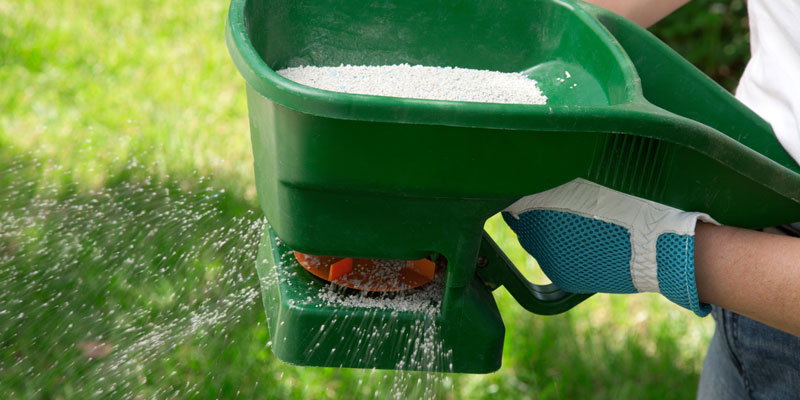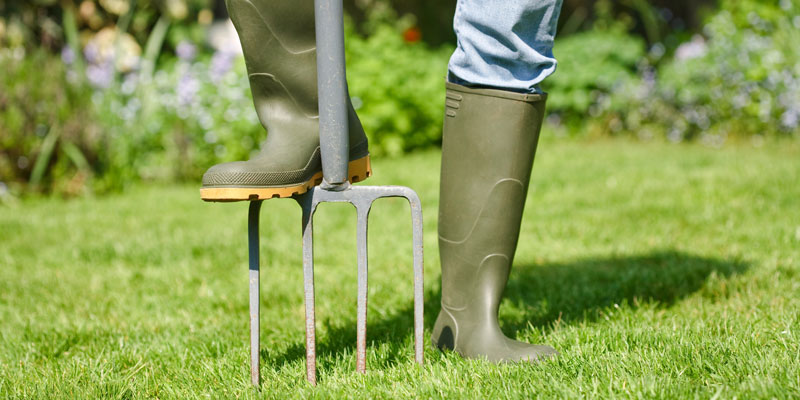The complete autumn lawn care guide for Sydney gardens
Autumn, while soils are still warm but conditions are becoming milder after the heat and humidity of summer, is an important time to look after the lawn. After a hot, dry summer, lawns may be brown with areas of bare soil. If the summer has been wet and humid, lawns may remain lush and green but can have problematic weed growth.
Autumn is also a good time to lay a new lawn from turf.
Whatever condition the lawn is in as autumn arrives, these autumn lawn care tips will keep it looking good into autumn and beyond.

Follow our guide and you, too, could have a beautiful autumn lawn!
Your complete Sydney lawn care guide for autumn
Autumn lawn care tip 1: Consider your lawn type
How lawns survive through winter reflects the type of grass grown and how cold it becomes in your area. Warm season grasses such as Buffalo, Kikuyu and Couch may stop growing and become dormant through a cold winter. Frost may cause the grass to brown. Cool season grasses such as fescue and rye, which struggle through hot dry summers, grow well as conditions cool provided moisture is available. Heading into winter with a strong, healthy lawn helps reduce weed growth and damage as well as keeping all grasses looking green with healthy growth.
Autumn lawn care tip 2: Time to feed
Fertilising in late summer or early autumn can give lawns a growth boost. The best time to apply lawn food is after rain when soil is moist - fertilising on dry soil or in hot weather can cause damage. Slow-release lawn foods release nutrients gradually to feed grass as it grows - we recommend Amgrow Buffalo Lawn Food or Scotts Lawn Builder All Purpose, both of which encourage surface greening alongside stronger root growth for overall health and resilience. Always follow recommended application rates on the bag, and for large areas use a lawn spreader for even application. Don’t feed warm season lawns in late autumn – hold off until spring when growth resumes.
Note: cold conditions can cause some lawn grass varieties to develop purple tips – you can remove these with a light mow, but they may persist until temperatures improve.
Autumn lawn care tip 3: Watering and dry soil
Apply extra water if conditions are dry and after applying fertiliser. If there is good rain or grass is dormant, irrigation can be reduced during autumn and winter. Check that water (whether from rain or irrigation) is penetrating the soil to the root zone. If water is failing to soak in, apply a soil-wetting agent such as Wettasoil or Saturaid. Hose-on formulations are easy and effective to use.

Now's the time to fertilise your lawn using a spreader after strong summer growth.
Autumn lawn care tip 4: Mowing
For a healthy lawn, keep mower blades high to leave length on the lawn as temperatures cool. The recommended mown height for running lawns such as buffalo is 35-65mm, with longer always better. Lawn grass needs its green leaves to make food so it can grow and thrive, and to help insulate the roots. This is important in autumn and winter with shorter days and less growing time. Bare patches that appear may be colonised by weeds. To ensure the best finish, always use quality tools - we stock and recommend Husqvarna.
Click here to learn a little more about mowing best-practices.
Autumn lawn care tip 5: Collect fallen autumn leaves
Rake or use the lawn mower with catcher to remove fallen leaves. While these can look picturesque on a lawn, they do impede lawn growth. Use the raked up leaves to make leaf mulch or compost or spread them as mulch over garden beds.
Autumn lawn care tip 6: Lime time
A low soil pH (acidic soil) can lead to poor lawn growth and increased weeds. Check soil pH and if it is low (below 6), apply garden lime. Excessive applications of fertiliser can also lead to a low soil pH under lawns.

Make sure you rake up fallen leaves off your lawn. Pop them in your compost heap - they break down beautifully!
Autumn lawn care tip 7: Repair worn areas, compaction and thatch
If areas of the lawn have become worn and the soil is compacted due to overuse, use a lawn aerator or a large garden fork to alleviate compaction. Follow up with a lawn top dressing soil, which is coarse and helps allow moisture to penetrate soil. Top dress is available from Flower Power either in bulk or in bags. Use sprigs or new turf to repair damaged areas. Lawns can also be over-sown with cool season grass seed, which will help repair lawns and keep lawns green until spring. Lawns that feel spongey underfoot can be filled with thatch – a build up of old grass growth. You can remove thatch by raking with a metal rake.
Autumn lawn care tip 8: Beat weeds and moss
Use a weed and feed product, registered herbicide or hand weed to remove flat weeds. As the season cools, winter grass may appear in lawns. While this is considered a weed, and there are specific herbicides for its control (we recommend Amgrow Winter Grass Killer), it can help keep lawns looking green and lush and provides seed for small native birds. Clover too may grow in lawns over winter. Again, there are herbicides to remove clover (Bin-Die works wonders), but clover does keep lawns green through winter and flowers provide nectar for bees. As warm conditions return in spring and summer, clover growth slows. Clover can be mown to keep it neat. Moss can indicate overly wet or shaded conditions. Try to improve growing conditions to reduce moss growth. Products are available to control moss in lawns.
Autumn lawn care tip 9: Watch for pests and diseases
There are some problems that can affect lawns in autumn including a new pest called fall armyworm. These are caterpillars that feed on lawns and are similar to lawn armyworm.
Try treating with an insecticide registered for use on caterpillars. For fungal conditions, apply a recommended fungicide for lawns.

Using a garden fork to aerate your lawn can help alleviate compaction and promote healthier growth.

